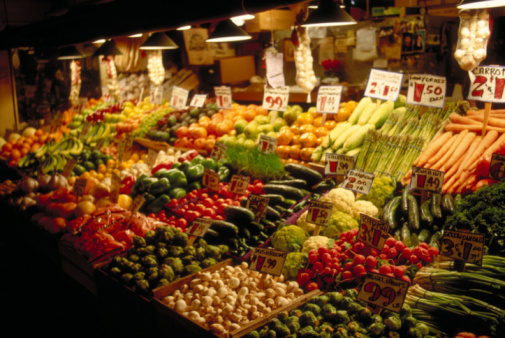The produce section can be a profitable department in any natural products business. While customers may come in to purchase supplements on a monthly basis, a well thought out produce department can keep them coming back multiple times throughout the week. In 2012, perishable goods averaged over $1.5 million of sales per natural products store, with over one-third from fresh produce alone (1). However, there are several key items to focus on to run a successful produce section.
With the plethora of produce available on the market, what must-have products should you stock? With a small natural foods department, it is important to offer the staples, even if it means fewer items within those categories. Simcha Weinstein, director of marketing at Albert’s Organics, Bridgeport, NJ, suggests focusing on basic groups like salad and stir-fry items, cooking greens, fruit staples and seasonal items. “A very limited organic produce section might include the following items: red delicious apples, granny smith apples, Fuji apples, Bartlett pears, bananas, navel oranges, green leaf lettuce, mixed salad greens, carrots, tomatoes, sprouts, kale, red chard, bell peppers, zucchini, yellow onions, russet potatoes, garlic, butternut squash and red grape—20 items,” says Weinstein. Stocking these items allows customers to create a variety of meals, while still keeping the overall department slim and manageable.
What if you want to try to introduce something new to your customers? Bringing in an exotic piece of produce, like organic plantain or organic red bananas from San Diego, CA-based Organics Unlimited, can be a great success if done properly. “These tend toward the specialty item category. But for the organic buyer, they’re fun variety as well,” states president and co-founder, Mayra Velazquez de Leon. Signage is a great tool for selling produce. It not only draws attention to the products, but it also helps easily identify the item and its price (2). But most importantly, buyers want to know how new products taste, and Weinstein suggests, “Sampling new items is vital if you want to them to sell.”
Once you select your stock, you have to keep fruits and vegetables looking their best to catch shoppers’ eyes. Make sure produce appears top quality, not only when you receive it, but also when it is on display. No one likes to throw out inventory, but take care to discard any damaged or foul-smelling items (2). Also, always write delivery dates on boxes and follow the acronym FIFO, first-in first-out, to ensure that older items are selling before newer ones (2). Take care when displaying certain items next to one another since some fruits, especially apples, and vegetables produce ethylene, which can cause other items to spoil sooner when they are in contact (2).
Last, put effort into displays. The American consumer shops with his eyes, and therefore Weinstein advises, “Your job is to weave them into a display that becomes so appealing and so compelling to shoppers that they feel they have no choice but to select your food.”
Velazquez de Leon suggests using displays that contain nutritional information or health benefits of the produce, and also providing example recipes of how to use the ingredients. She states, “An aesthetically pleasing display is the only way to sell any product,” and therefore a produce display should appear strong, merging the individual colors and shapes of fruits and vegetables into one appealing display for the shopper. WF
References
1. K. Chiarello-Ebner, “35th Annual WholeFoods Retailer Survey,” WholeFoods Magazine 35(12), 20–25 (2012).
2. J. Berkenkamp, “Tips for Good Handling Practices of Fresh Produce in Your Store,” Institute for Agriculture and Trade Policy, June 2010, www.iatp.org, accessed Dec. 5, 2012.
Published in WholeFoods Magazine, January 2013 (online 12/11/12)










